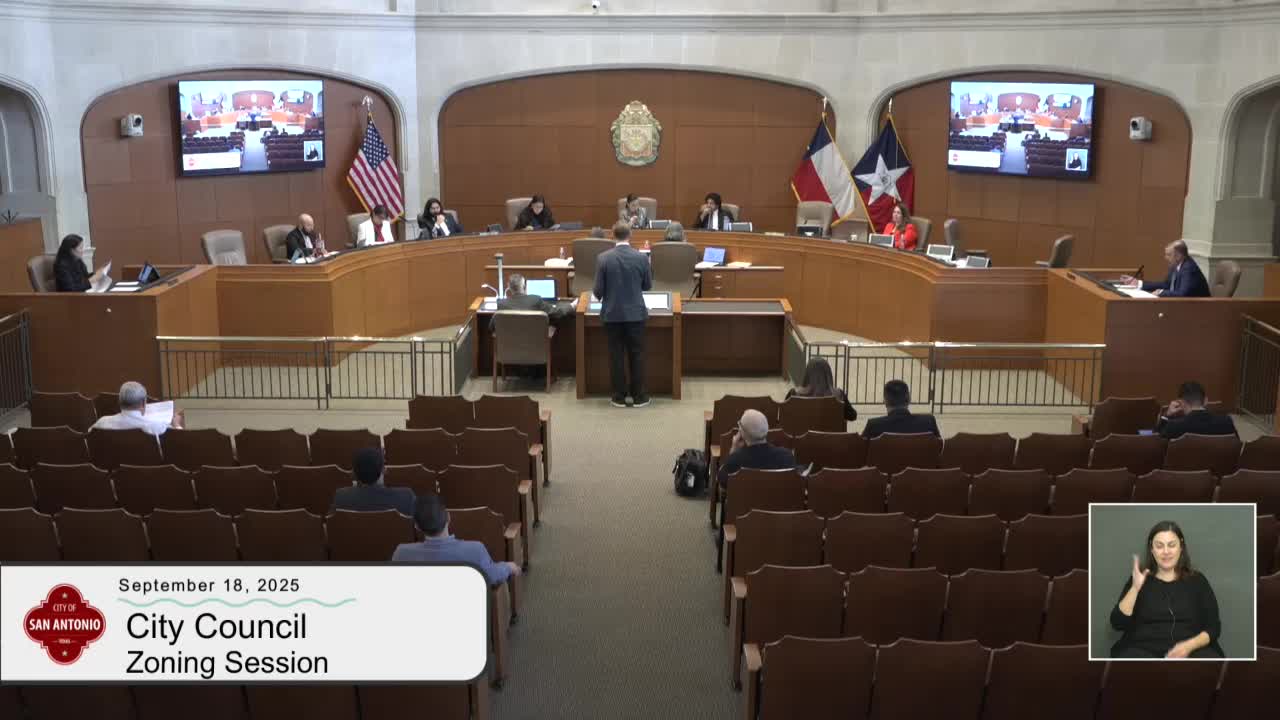Mayor Castillo endorses C2 rezoning in historic district despite alcohol sales concerns
September 18, 2025 | San Antonio, Bexar County, Texas
This article was created by AI summarizing key points discussed. AI makes mistakes, so for full details and context, please refer to the video of the full meeting. Please report any errors so we can fix them. Report an error »

In the bustling chambers of San Antonio's city hall, the air was thick with anticipation as council members gathered to discuss pivotal zoning changes that could reshape local neighborhoods. On September 18, 2025, the council turned its attention to Agenda Item 16, a proposed change from a C-2 NA designation to a C-2 zoning classification, a move that sparked significant debate.
The zoning change, located in Council District 5, was met with a recommendation for denial from the zoning commission, which highlighted concerns about the implications of allowing alcohol sales in an area historically designated as a no-alcohol corridor. Jack Finger, a resident and vocal advocate for maintaining the area's current zoning, expressed his apprehensions during the meeting. He emphasized the importance of preserving the neighborhood's character, arguing that the change would undermine years of community efforts to keep alcohol sales at bay.
Despite the opposition, the Los Jardines Neighborhood Association voiced their support for the change, suggesting that it could serve as a model for future rezonings. Councilmember Castillo, representing the district, echoed this sentiment, noting the association's backing and the potential benefits of the proposed zoning adjustment.
As the discussion unfolded, the council members weighed the community's desires against the recommendations of the zoning commission. Ultimately, a motion was made to approve the change, reflecting a shift in the council's stance amidst the ongoing dialogue about balancing development with community values.
With the motion passing, the council swiftly moved on to Agenda Items 17 and 18, leaving behind a conversation that underscored the complexities of urban planning and the delicate dance between progress and preservation in San Antonio. As the meeting concluded, the implications of the decision lingered in the air, hinting at a future where the city's landscape continues to evolve, shaped by the voices of its residents.
The zoning change, located in Council District 5, was met with a recommendation for denial from the zoning commission, which highlighted concerns about the implications of allowing alcohol sales in an area historically designated as a no-alcohol corridor. Jack Finger, a resident and vocal advocate for maintaining the area's current zoning, expressed his apprehensions during the meeting. He emphasized the importance of preserving the neighborhood's character, arguing that the change would undermine years of community efforts to keep alcohol sales at bay.
Despite the opposition, the Los Jardines Neighborhood Association voiced their support for the change, suggesting that it could serve as a model for future rezonings. Councilmember Castillo, representing the district, echoed this sentiment, noting the association's backing and the potential benefits of the proposed zoning adjustment.
As the discussion unfolded, the council members weighed the community's desires against the recommendations of the zoning commission. Ultimately, a motion was made to approve the change, reflecting a shift in the council's stance amidst the ongoing dialogue about balancing development with community values.
With the motion passing, the council swiftly moved on to Agenda Items 17 and 18, leaving behind a conversation that underscored the complexities of urban planning and the delicate dance between progress and preservation in San Antonio. As the meeting concluded, the implications of the decision lingered in the air, hinting at a future where the city's landscape continues to evolve, shaped by the voices of its residents.
View full meeting
This article is based on a recent meeting—watch the full video and explore the complete transcript for deeper insights into the discussion.
View full meeting
